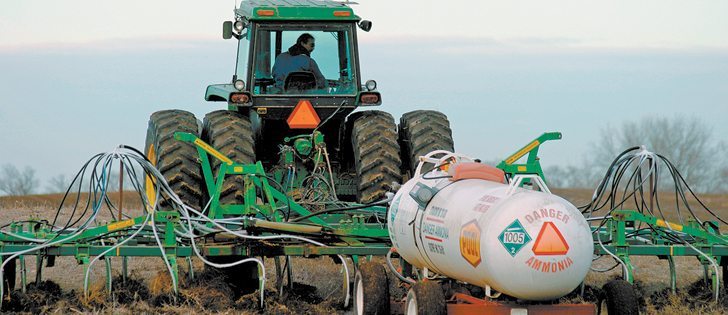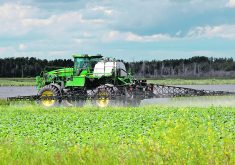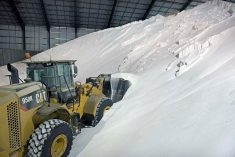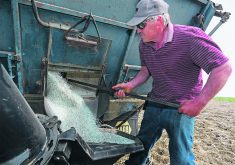Farmers should count on paying more for their two main crop inputs this year.
“Agriculture Canada expects that fuel prices for farm machinery in Canada will increase by about three percent in 2012 compared to 2011,” said the department in its latest market outlook.
That is on top of the estimated 25 percent increase in 2011.
It’s a similar story for fertilizer, where Agriculture Canada forecasts a five percent price hike after a 29 percent jump in 2011.
“However, there is a significant risk for the increase to be greater than five percent if demand for farm outputs grows faster than expected,” said Agriculture Canada.
Read Also

Farm groups ask feds for export sales reporting
The Agricultural Producers Association of Saskatchewan and SaskCrops asks the federal government to create an Export Sales Reporting program.
The forecast isn’t good news for producers already facing significant input costs for planting and growing their crops.
“It’s the last thing any farmer wants to hear because it is the biggest variable cost most producers deal with on crop production,” said Doug Chorney, president of Keystone Agricultural Producers.
“It’s a bit frustrating for farmers because we are unable as producers to pass on these costs to our customers. We’re price takers.”
Arlynn Kurtz, vice-president of the Agricultural Producers Association of Saskatchewan, isn’t surprised by the forecast.
“I’m glad they’re predicting as small an increase as they are,” he said.
Farmers got spooked last month when Mosaic announced it was curtailing its potash production by 20 percent from February through May.
“Everybody was anticipating some pretty drastic increases in some fertilizer prices,” said Kurtz.
Despite the higher prices, Agriculture Canada sees fuel use rising two percent and fertilizer demand rising three percent in 2012 as a large area that wasn’t seeded last year because of flooding returns to production.
Chorney thinks those estimates might be conservative, considering 25 percent of Manitoba’s acres went unseeded last year.
“I think (the increases) might be too small. I really do,” he said.
Kurtz said there will definitely be more acres seeded and more fertilizer demand this year, barring a spring disaster.
“With high commodity prices, farmers are going to push for as high a production as they can,” he said.
With the combination of higher prices and increased use, Canadian farmers are expected to spend $2.7 billion on fuel and $4.8 billion on fertilizer in 2012, a four and nine percent increase over 2011, respectively.
Agriculture Canada said fuel and fertilizer represent 16 percent of farm operating expenses.
“There’s no way that’s right,” said Chorney. “On my farm, it probably makes up 50 percent of my variable costs.”
Kurtz estimates fuel and fertilizer account for 35 percent of an average farm’s operating costs.
“They’re the two that farmers watch very close, followed by chemical prices,” he said.
Chorney also takes issue with the assertion in the report that nitrogen fertilizer prices generally track natural gas prices. Natural gas accounts for 70 to 90 percent of the production cost of anhydrous ammonia, which is the primary component in nearly all nitrogen fertilizer products.
Nitrogen fertilizers account for 72 percent of total fertilizer use. The most popular nitrogen fertilizer product is urea, which has a 33 percent share of the market.
KAP used to analyze the futures price of natural gas to get an idea where fertilizer prices were heading.
“But it’s almost a futile exercise because the (fertilizer) industry has admitted basically that they don’t look at their cost of manufacturing fertilizer when they set their prices,” Chorney said. “It’s market opportunities that drive their pricing.”
Fertilizer manufacturers increase their prices if they see crop prices rising, he added.
Agriculture Canada said while it is true that fertilizer prices in Canada generally move in tandem with crop prices, interactions with natural gas prices can trump that relationship.
















